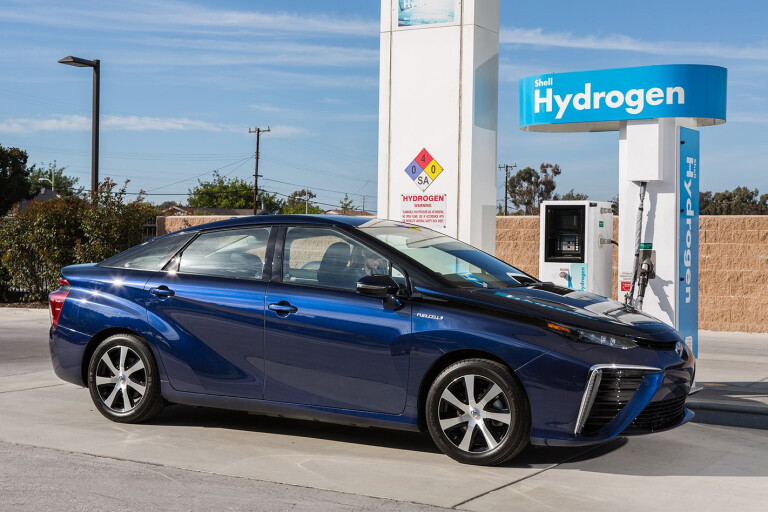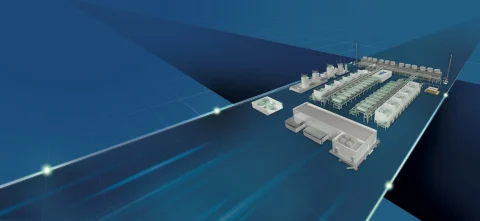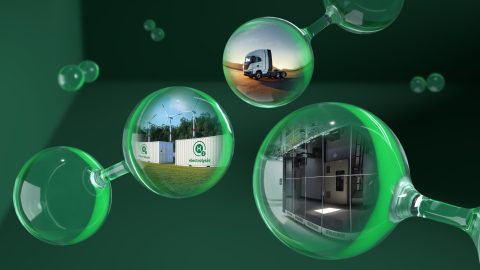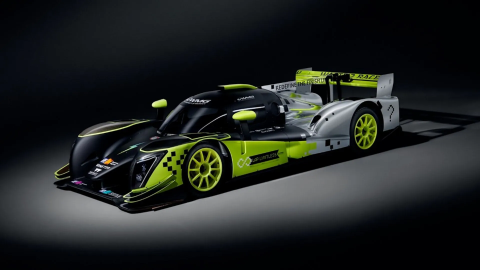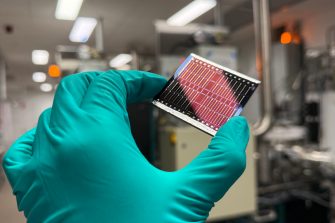How to Refuel a Hydrogen Vehicle?
Refueling the Toyota Mirai differs from conventional petrol vehicles but follows a straightforward process. The Mirai is currently available in limited numbers for business fleet leasing only.

Simple 4-Step Refueling Process
- Place the nozzle over the receptacle – Hydrogen nozzles have a barrel that fits over the car receptacle
- Squeeze the handgrip – The pump activates only when properly engaged, preventing hydrogen leaks
- Let the system work – During fueling, the Mirai’s hydrogen fuel control computer communicates with the station pump for safe, efficient filling
- Wait for completion – When finished, pull up the handgrip latch to unlock and return the nozzle
Hydrogen Infrastructure in Australia
The Toyota Hydrogen Centre in Altona, Melbourne stands as Victoria’s first commercial-grade hydrogen refueling station. This purpose-built facility serves as a comprehensive hub for hydrogen technology, housing an education center where visitors can learn about fuel cell technology. The center contains advanced hydrogen production facilities that demonstrate the full cycle of sustainable energy creation. Additionally, it features dedicated storage and refueling infrastructure designed specifically for vehicles like the Mirai, along with specialized servicing capabilities to maintain these cutting-edge vehicles.
UK Hydrogen Refueling Network
The UK currently maintains over 15 hydrogen refueling stations strategically positioned across the country.
Regional Station Distribution
Scotland leads the northern hydrogen infrastructure with two strategic locations in Aberdeen. The Aberdeen Council facility on Powis Terrace (AB25 3PY) serves the urban center, while the Aberdeen Hydrogen Centre on Langdykes Road (AB12 3FT) provides additional coverage for the region.

The Midlands region features three key hydrogen stations. Tyseley Energy Park on Clyde Street, Birmingham (B11 1TX) operates as a multi-fuel transportation hub, complemented by academic research facilities at the University of Birmingham (B15 2FG). Coventry University (CV1 2HG) rounds out the Midlands network, supporting hydrogen mobility across the West Midlands area.
Yorkshire’s hydrogen infrastructure includes stations in its major cities. Leeds offers refueling at Hunslet Gate (LS10 2AP), while Sheffield maintains a station at Brightside Lane (S9 2SP), both supporting the region’s commitment to green energy initiatives and sustainable transportation.
London and the Southeast contain the highest concentration of hydrogen stations in the UK. Central London features multiple locations including two at Hatton Cross (TW6 3PH and TW6 2GE), Rainham (RM13 8EU), and Sainsbury’s Hendon (NW9 6JX). The surrounding areas are served by stations in Chelmsford (CM2 5PY), Beaconsfield (HP9 2SE), and Surrey, which includes Cobham Services (KT11 3JS) and HyFive 1 in Teddington (TW11 0LY).
2024 Toyota Mirai: Technical Innovations
The 2024 Toyota Mirai features significant upgrades to its hydrogen fuel cell electric vehicle (FCEV) technology, establishing it as a leading zero-emission vehicle.
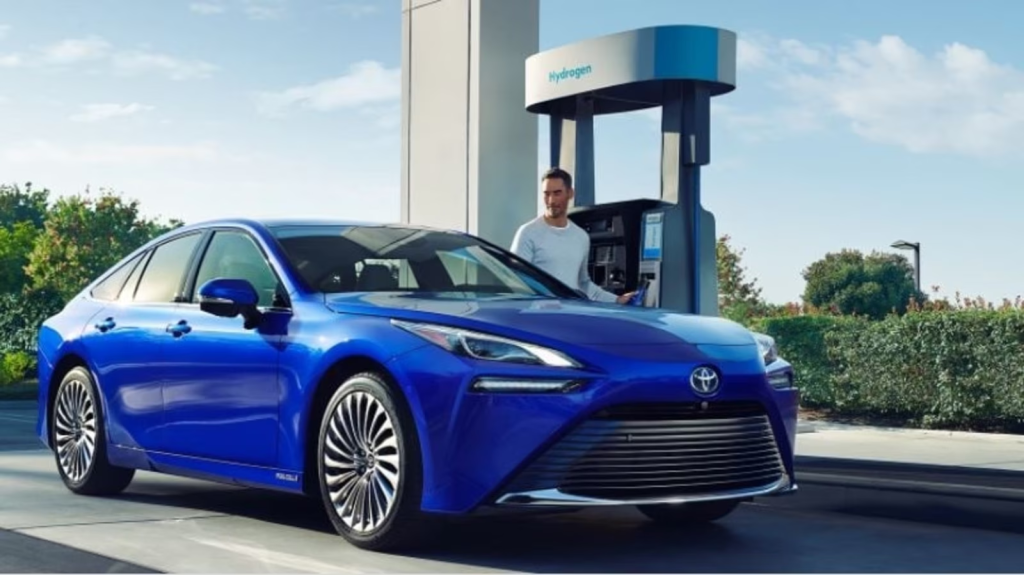
Advanced Safety Systems
Toyota Safety Sense Updates
The 2024 Mirai features an enhanced Pre-Collision System that now detects oncoming vehicles with greater accuracy, substantially improving frontal collision prevention. Toyota has expanded the Intersection Collision Avoidance system to cover two full lanes, addressing one of the most common accident scenarios at intersections. The Emergency Steering Assist technology now includes sophisticated motorcycle detection capabilities, providing additional protection for vulnerable road users. Completing the safety package is a low-speed acceleration control system that prevents unintended acceleration in confined spaces like parking lots.
Toyota Teammate Driver Support
Toyota’s advanced driver support systems in the 2024 Mirai center around a Full Range Adaptive Cruise Control with noticeably improved responsiveness to changing traffic conditions. The new Overtake Prevention Support system helps prevent dangerous passing maneuvers, while Preliminary Deceleration Control delivers smoother braking experiences. The Enhanced Lane Trace Assist provides more accurate lane centering than previous models, working in concert with the Emergency Driving Stop System that can safely bring the vehicle to a stop if driver incapacitation is detected.
Standard Safety Equipment
- Blind Spot Monitor with cross-traffic alerts
- 360-degree Panoramic View Monitor
- Proactive Driving Assist for obstacle detection
Technology and Connectivity
Infotainment System

The centerpiece of the Mirai’s interior technology is the new 12.3-inch touchscreen featuring Toyota Smart Connect+, offering intuitive access to vehicle systems and entertainment options. This advanced system integrates sophisticated cloud-based navigation that provides real-time traffic updates, ensuring drivers can avoid congestion and find optimal routes. For areas with limited connectivity, Toyota has included a reliable offline backup navigation system that ensures guidance remains available at all times. The voice-activated “Hey Toyota” assistant enables hands-free control of various vehicle functions, allowing drivers to maintain focus on the road. Audio reproduction comes through a premium 14-speaker JBL audio system that delivers exceptional sound quality throughout the cabin, creating an immersive listening experience.
Connected Features
Toyota has enhanced the Mirai’s connectivity suite with seamless wireless Apple CarPlay and Android Auto integration, eliminating the need for cables while maintaining full smartphone functionality. Multiple USB-C charging ports are strategically placed throughout the interior, ensuring convenient access for all passengers and keeping devices powered during journeys. The vehicle offers sophisticated remote parking functionality through a dedicated smartphone app, allowing drivers to maneuver the Mirai into tight spaces without being in the vehicle. Looking ahead, a digital key feature is scheduled for release in mid-2024, which will add another layer of convenience by allowing owners to use their smartphones as vehicle keys.
Environmental Impact
Zero-Emission Performance
The 2024 Toyota Mirai continues to lead in environmental performance by producing only water vapor as exhaust. This zero-emission capability significantly contributes to reduced carbon emissions in urban environments where air quality concerns are most acute. Unlike battery electric vehicles that may require extended charging periods, the Mirai’s hydrogen fuel cell technology offers quick refueling times comparable to conventional vehicles, typically taking only 3-5 minutes to completely fill the hydrogen tanks. This combination of zero emissions and practical refueling makes the Mirai particularly well-suited for high-utilization scenarios such as taxi services, corporate fleets, and ride-sharing applications.
Paris 2024 Olympics Partnership
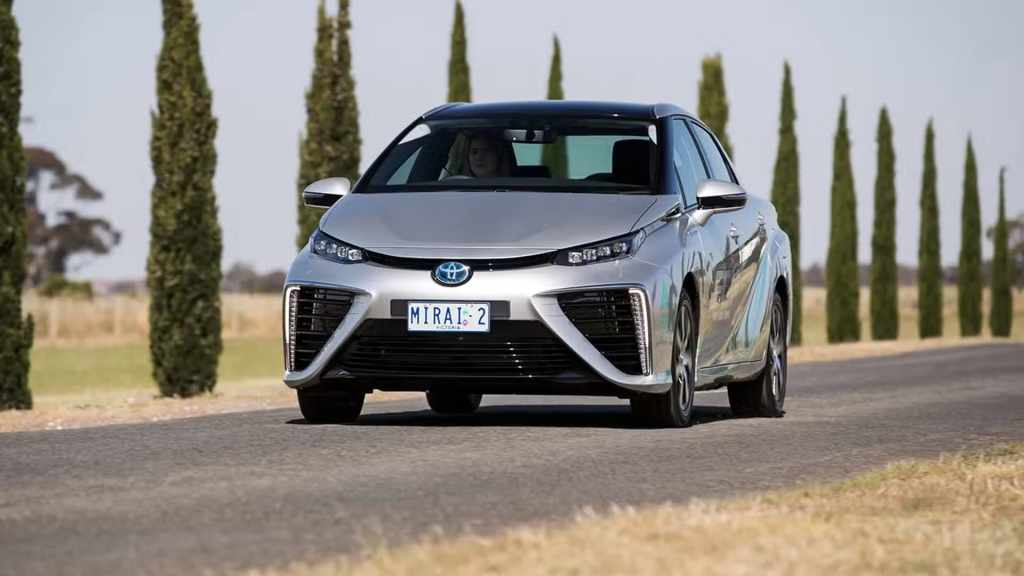
Toyota’s commitment to sustainable mobility is highlighted by its strategic partnership with the Paris 2024 Olympics. The manufacturer has designated 500 Mirai vehicles to serve as part of the official Olympic fleet, forming a significant portion of a larger 2,650-vehicle electrified contingent supporting the games. This high-profile deployment showcases hydrogen technology on a global stage while providing practical zero-emission transportation during one of the world’s largest sporting events. Following the conclusion of the Olympics, these vehicles will be systematically integrated into Paris’s expanding hydrogen taxi services, demonstrating the practical application of hydrogen fuel cell technology in demanding urban transportation scenarios and creating a lasting environmental legacy beyond the games themselves.
Conclusion
The 2024 Toyota Mirai represents a significant advancement in hydrogen fuel cell technology, bringing together cutting-edge safety systems, sophisticated driver assistance capabilities, and comprehensive connectivity features in one zero-emission package. Toyota’s continued refinement of this technology demonstrates a long-term commitment to hydrogen as a viable alternative fuel source for sustainable transportation. The strategic placement of hydrogen refueling stations across the UK, combined with ongoing infrastructure development supported by both government initiatives and private investment, creates an increasingly viable ecosystem for hydrogen vehicles. As refueling infrastructure continues to expand and hydrogen production becomes more efficient and renewable-powered, the Mirai stands as an increasingly practical choice for environmentally conscious drivers seeking alternatives to both conventional combustion engines and battery electric vehicles. With its quick refueling times, substantial driving range, and water-only emissions, the Mirai offers a compelling vision of clean mobility that addresses many of the practical limitations currently facing alternative fuel vehicles.
Did You Know? Hyperion XP-1: Hydrogen-Powered Hypercar Redefines Performance

